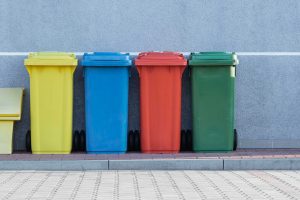Misconceptions of recycling
Common Recycling Myths
While we know that recycling is an effective way to reduce the immense amounts of waste that we have produced, there are many misconceptions about the recycling process. People question whether it’s worth the time and energy to recycle, whether products made from recycled materials work or are of acceptable quality and how much waste is recycled.
There are 2 points that need to be met to have a viable recycling system:
- An existing comprehensive infrastructure in place to collect and reprocess the collected material into a reusable form.
- A market for the reprocessed waste materials.
If these two simple elements are not met, then recycling is not possible and irrelevant.
Waste material is being collected then burned or landfilled and no amount of labelling or kerbside collection will help increase the true recycling volumes or alleviate the problems of plastic waste pollution. A label placed on a package saying recyclable does not mean it is ever recycled.
Myth #1 – Recycling Uses More Energy Than It Saves
This is an old myth and one that keeps coming back year after year. The truth is that depending on the material, recycling uses 50% less energy than making the same materials from new sources — and sometimes it saves a lot more than that.
Myth #2 – Materials Can Only Be Recycled Once
Many materials, such as glass and aluminium and paper get broken or melted down by waste management services and can be reused repeatedly without having any deterioration.
Myth #3 – Recycling Doesn’t Really Save Natural Resources
Recycling reuses raw materials, meaning those same natural resources don’t have to be harvested or mined. If Waste Management recycles 42 million tons of paper, we will save 714 million trees and 292 million gallons of water. That is a lot of protected forests and streams.
Myth #4 – You Can’t Recycle Biodegradable Plastic
While it is true that you can’t recycle biodegradable plastic in most recycling systems, this doesn’t mean you can stick them in your compost bin at home or trash can and hope for the best. If not handled properly, biodegradable plastics break down into methane gas, which is a much more harmful greenhouse gas than CO2.
Myth #5 – Recycling labels are a Scam – It All Ends Up in The Landfill
This probably isn’t true. Although there is a shortage of places that are looking to buy low-quality materials such as certain plastics and that most plastics sorted for recycling has ended up at the landfill, key material like paper glass metal do command a commercial value and are the most recycled types of waste.
DM InovaPac™
DM InovaPac™ is a ground-breaking range of packaging materials that are recycled in the existing paper recycling infrastructure and have a high demand as a reprocessed product. This meets the two key elements to eliminating packaging waste both on a consumer level and industrial level.
The other critical element in the elimination of pollution caused by packaging waste that must be addressed is the accidental disposal littering of packaging into the open environment.
DM InovaPac™ offers the key benefits over and above its ability to be recycled into a commercially viable product and is biodegradable and marine safe while at the same time being sourced from a sustainable base material that neither puts pressure on human/ animal food stocks or relies on the petroleum industry.
One of the greatest benefits of DM InovaPac™ is that no matter how it is disposed of, no microplastics will be created or left in the environment, even if it degrades into the soil or the ocean. DM InovaPac™ degrades to biomass just like paper.
DM InovaPac™ products can go into the paper waste stream and be recycled multiple times.
The easiest step is to switch to DM InovaPac™ for items that you can use, reuse and share.
